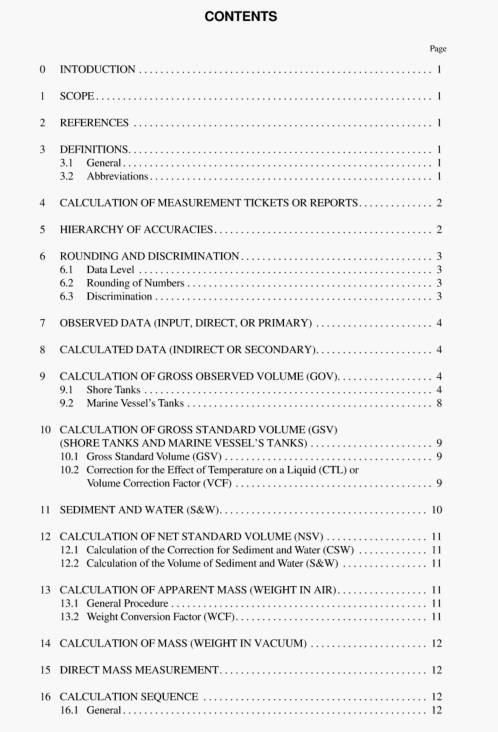API MPMS 12.1.1:2001 pdf download.Manual of Petroleum Measurement Standards Chapter 12-Calculation of Petroleum Quantities Section 1—Calculation of Static Petroleum Quantities Part 1 Upright Cylindrical Tanks and Marine Vessels.
For practical operational purposes the recommended methods of taking this temperature are:
I. A temperature device carried by the gauger into the tank area when gauging tanks. Take at least one temperature reading in a shaded area. If more than one temperature is taken, average the readings.
2. Shaded external thermometers permanently mounted in the tank farm area.
3. Local on-site weather stations.
All on site temperature devices, used to record ambient air temperature for the calculation of tank shell correction factors during custody transfer shall have their accuracy of plus or minus two degrees Fahrenheit verified every three months.
Where the uncertainly of the ambient air emperawre is plus or minus live degrees Fahrenheit. the effect on calculating the tank shell correction factor is 1 in 100.000.
Temperature readings are to be taken 3 ft (1 meter) from any obstructions or the ground. Additionally, allow sufficient time for temperature readings to stabilize.
9.1.3.2 For insulated metal tanks, the temperature of the shell may he taken as closely approximating the adjacent liquid temperature. in which case, 7Sl, = TI.
9.1.3.3 In applying these principles to upright cylindrical tanks, the horizontal cross-sectional area may be taken as a function of tank calibration. The coefficient determined from Equation I (see 9. 1 .3) is predicated on a thermal expansion for low-carlx)n steel per degree Fahrenheit.
Note: The cross-sectional correction (Equation I) will have to be modified for stainless steel tanks based UOfl the coellicient of expansion for the type of stainless steel.
9.1.3.4 The third dimension needed to generate volume— height—is a function of gauging and should be considered separately. The volumes reflected on tank tables are derived from area times incremental height. Therefore, K- factors for correction of areas have the same ratio as volume corrections and may be applied directly to tank table volumes. For an example calculation see Appendix 13.
9.1.3.5 The shell temperature correction factor is to be applied to volumes obtained from capacity tables that are at 60°F and are unrelated o the corrections designed to account for volume expansion and contraction of the product itself. Depending upon certain requirements, this shell temperature correction factor may be built into the capacity table for a specific operating temperature.
9.1.4 Floating Roof Adjustment (FRA)
The correction for the displacement of the floating roof can be addressed in one of two ways:
a. lithe roof correction is calculated into the tank capacity table using a reference density, a secondary correction must be calculated for any difference between the reference density and the observed density at tank temperature.
API MPMS 12.1.1:2001 pdf download
